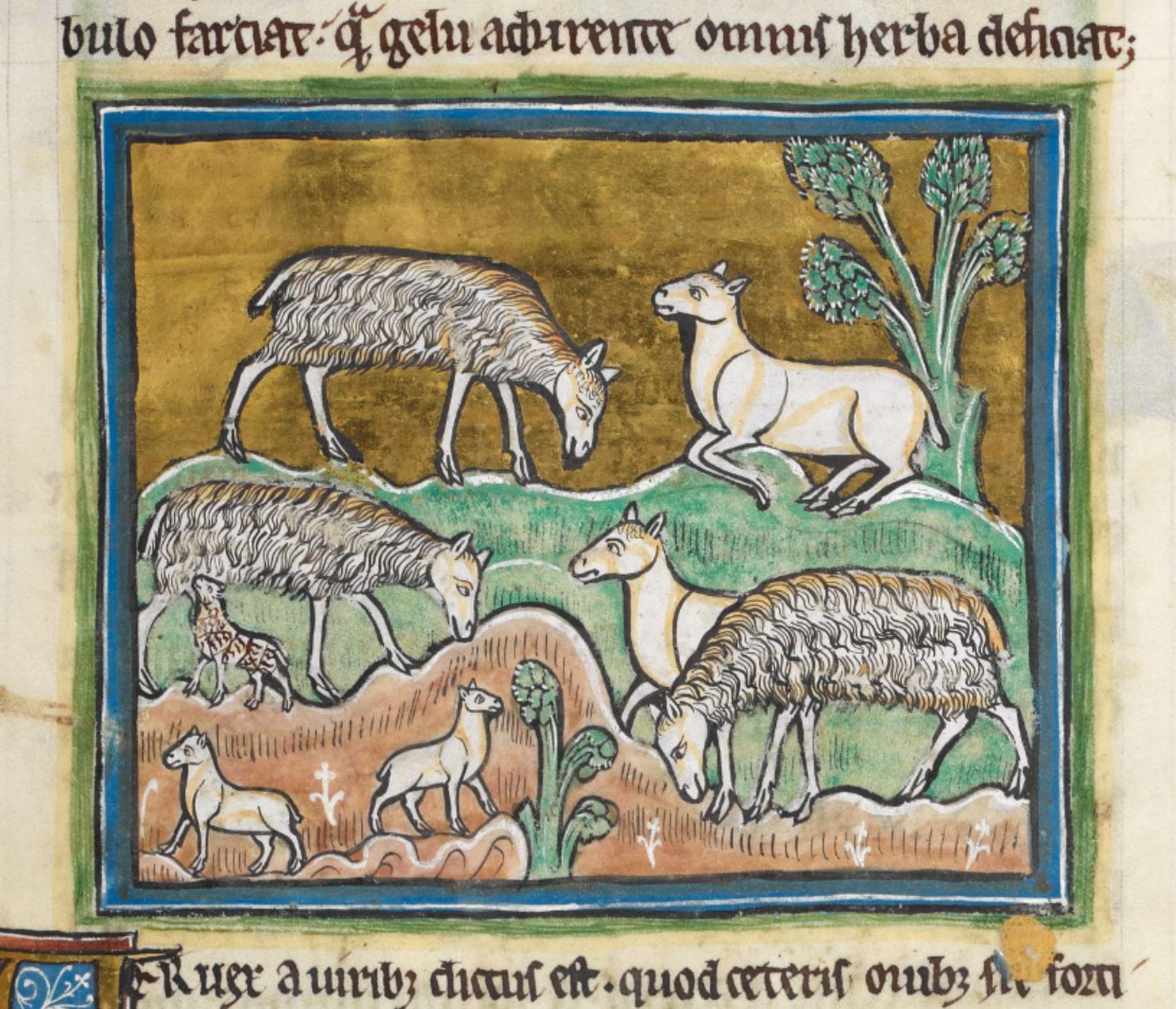Sheep, Rochester Bestiary, c.1230
In medieval Christian symbolism, sheep were often seen as symbolic of Christ himself, reflecting His qualities of innocence, purity, and sacrifice. This symbolism is deeply rooted in biblical imagery, particularly in the portrayal of Jesus as the sacrificial Lamb of God (John 1:29)1.
They also represented the Christian faithful, highlighting their dependence on Christ as their shepherd and their need for spiritual guidance and protection within the Church and symbolized virtues such as meekness, humility, and obedience, which were considered essential qualities for Christians to cultivate in their spiritual lives.
In the Bible, particularly in the Old Testament, sheep are frequently used as symbols of purity, innocence, and docility. Psalm 23, for instance, famously portrays God as a shepherd and his people as his sheep, symbolizing his care and guidance.
Jesus Christ is often referred to as the Good Shepherd in the New Testament (John 10:11)2, emphasizing his role as a caring and protective leader of his followers.
placidum. ab oblatione dictum. eoquod apud
veteres initio non tauri. sed oves mactarentur. Ex hiis
quasdam bidentes vocant. eoquod inter octo dentes;
duos altiores habent. quas maxime gentiles in sacrificium
offerebant. Ovis sub adventu hiemis; inexplebilis est
The sheep is an animal whose fur is made of soft wool. Its body is helpless and its spirit calm. Its name comes from an offering, a sacrifice, for among the ancients, sheep were sacrificed initially, instead of bulls. Some of them are called bidentes, two-tooths, for two of its eight teeth are taller. Nations used to offer in sacrifice especially these two-tooths. Upon the arrival of winter, sheep become
tiat asperitatem hiemis affuturam. Ut se prius herbe pa-
bulo farciat; quam gelu adurente omnis herba deficiat;
Bibliography
David Badke, The Bestiary Blog: Animals in the Middle Ages, Sheep, November 6 2023, https://bestiary.ca/beasts/beast193.htm
Josh Goldenberg (BA 2012) and Matt Shanahan (BA 2014), Logeion, November 2022, https://logeion.uchicago.edu/
Castiglioni, L. and Mariotti, S. (1996). Vocabolario della Lingua Latina: Latino-Italiano Italiano-Latino. Terza Edizione. Loescher Torino
Matthews, J. and Matthews C., (2010), The Element Encyclopedia of Magical Creatures, HarperCollins UK, London
Curley, M. J., Physiologus: A Medieval Book of Nature Lore (University of Chicago edition 2009)
Rackham, H., M.A., Pliny Natural History Volume III, Libri VIII-XI (London: William Heinemann Ltd, 1949)
Collins, A. H., M.A., Symbolism of Animals and Birds (New York: McBride, Nast & Company, 1913)
Henderson, C., The Book of Barely Imagined Beings (London: University of Chicago Press, 2013)
White, T. H., The Bestiary: A Book of Beasts (New York: G.P Putnam’s Sons, 1960)
Barney, S. A., Lewis, W. J., Beach A., Berghof O., The Etymologies of Isidore of Seville (New York: Cambridge University Press, 2006)
Footnotes
1 John NKJV 1:29: “The next day John saw Jesus coming toward him, and said, “Behold! The Lamb of God who takes away the sin of the world!”
2 John 10:11: “I am the good shepherd. The good shepherd gives His life for the sheep.”

